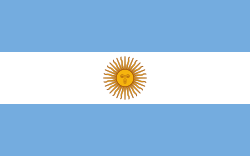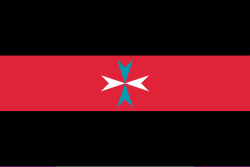| Flag | Date | Rank | Description |
|---|
| Current |
|---|
| Fleet |
 | | President of Argentina | |
 | | Minister of the Navy | |
 | | Supreme Commander of the Navy | |
 | | Admiral of the fleet | |
 | | Admiral | |
 | | Vice Admiral | |
 | | Rear Admiral | |
 | | Captain Commanding a Naval or Naval Air Force | |
 | | Commander of a Fleet, Naval or Naval Air Force | |
 | | Commander of a Tusk Force, Naval or Naval Air Force | |
 | | Commander of a Fleet Naval Division | |
 | | Squadron Commander of Naval Air Force | |
 | | Senior Officer | |
| Naval infantry |
 | | Admiral | |
 | | Vice Admiral | |
 | | Rear Admiral | |
 | | Captain | |
 | | Commander in charge | |
 | | Commander of the armed unit | |
 | | Officer without Command | |
| Former |
|---|
 | 1894–? | President of Argentina | |
 | Minister of the Navy | |
 | Minister in Chief of the General Staff | |
 | Ministers of State | |
 | Admiral | |
 | Vice Admiral | |
 | Rear Admiral | |
 | Captain Adjutant-General | |
 | Captain in Command | |
 | 19th century | Commander-in-Chief of the Navy | |
 | Rear Admiral in command of a subordinate naval force | |
 | Vice Admiral in command of a subordinate naval force | |
 | Captain in command of a subordinate naval force | |
 | Admiral Chief of Arsenal | |
 | Vice Admiral Chief of Arsenal | |
 | Rear Admiral Chief of Arsenal | |
 | Captain Chief of Arsenal | |















































































































































































































































